News
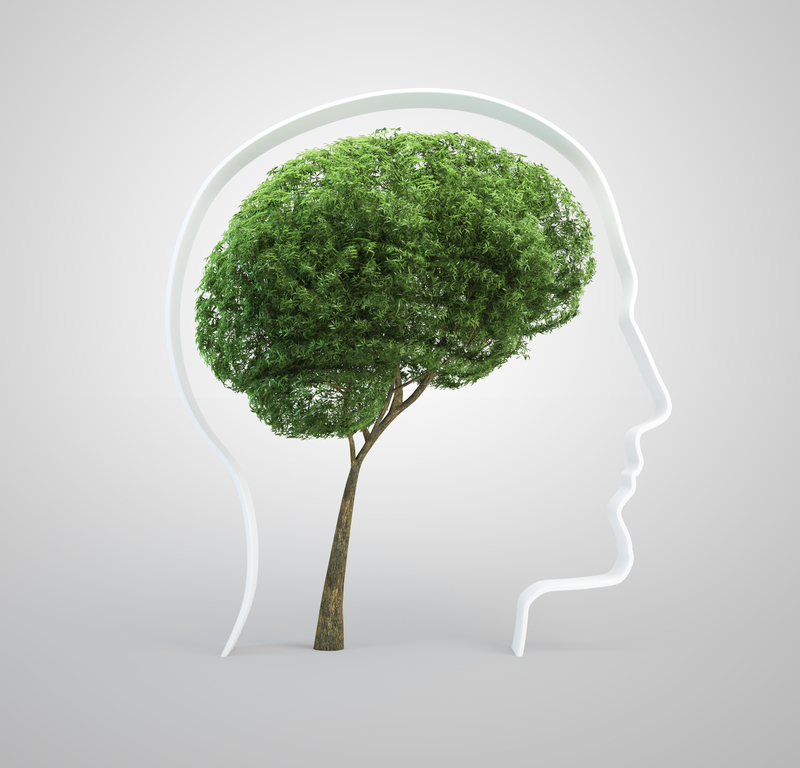 41
41TIPO Releases Analysis of Taiwan's Green Trademark Industry – Now Available for the Public!
Following the 2023 publication of the Comparative Analysis of Taiwan's Green Trademark Industry in the Last Ten Years, TIPO has continued its research by incorporating the latest statistics to analyze the current state of Taiwan's green trademark industry. The newly completed Analysis of Taiwan's Green Trademark Industry offers insights for businesses on how to strategically position their green trademarks to address global climate change and net-zero emission strategies.Referring to the European Union’s definition of green trademarks, TIPO defines "green trademarks" not by the "trademark reproduction" itself but by the designated goods and services contained in the trademark applications and their Nice Classification. The report examines the distribution of applications over the past decade in nine major categories: energy products, transportation, energy conservation, reuse/recycling, pollution control, waste management, agriculture, environmental awareness, and climate change. It also includes data on the number of applications, percentages, and trends in each category.Over the past decade, green trademarks have accounted for approximately 14.49% of all trademark applications in Taiwan, demonstrating an increase from an average of 13.00% in the early period (2014-2016), 15.31% in the mid-term (2017-2020), to 14.64% in the later period (2021-2023). While there was a slight decline in the latter period compared to the mid-term, the long-term trend demonstrates a growing awareness of carbon reduction, low-carbon initiatives, and green energy within trademark applications. The top three categories are energy conservation, pollution control, and energy products, accounting for nearly 80% of all green trademark applications, highlighting the industry's focus in these three key areas. 42
42Accelerated Examination Program for Reexamination (AEPRe) hits the road on September 1, 2024
1、To improve the efficiency of the re-examination process, TIPO will launch “Accelerated Examination Program for Re-examination (AEPRe)” on September 1, 2024. For cases where the final rejection decision on substantive examination only reject some claims and there is at least one claim that not rejected, the re-examination process of the re-examination invention case can be accelerated through AEPRe. This program aims to improve the efficiency of the re-examination process and encourage applicants to amend their claims based on the “not rejected claim” provided in the final rejection decision on substantive examination.2、Re-examination invention case that meet the following requirements are eligible for AEPRe and the applicants can receive re-examination results within six months after applying AEPRe:(1) Eligible AEPRe Case:re-examination invention cases where the final rejection decision on substantive examination only reject some claims.2. Eligible AEPRe Request Timing:Within the period from “notified by TIPO that the invention application will soon be undergoing Reexamination” to “received first Reexamination OA.”3. Eligible AEPRe Claim Amendments:Applicants should amend the claims according to Article 49 of the Patent Act and the claim amendments narrow the scope of the claims to be no broader than “the not rejected claim” by the following criteria :a. Delete claims that have grounds for rejection in the final rejection decision on Substantive Examination.b. Simply re-write the dependent claims that are not rejected in the final rejection decision on substantive examination to independent claims.Note:The claim Amendments may make adjustments to claim numbers, dependency relationships, and add new dependent claims to the aforementioned criteria a and b independent claims.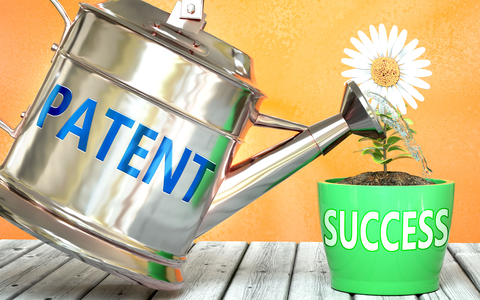 43
43The 2024.01 Edition of the International Patent Classification (IPC) Now Available on TIPO Website
The 2024.01 edition of the International Patent Classification (IPC) has been published on the TIPO website. For new applications filed on or after August 1, 2024 to TIPO, the updated IPC 2024.01 edition shall apply. As a result, the Patent Gazette will be published using the 2024.01 edition starting from August 1, 2024, and the Published Patent Application Gazette will adopt the new classification starting from October 16, 2024.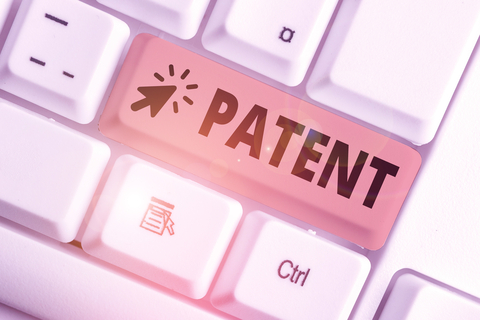 44
44TIPO’s Revisions of the Patent Examination Guidelines Took Effect on July 1, 2024: Part II Chapter 1, 3, 11, 14 and Part V Chapter 1
TIPO has revised its examination guidelines for regulatory alignment, reflect changes in examination practices, unify interpretations, and improve examination quality. Revisions include additional examination principles and case examples, and apply to Part II “Substantive Examination for Invention Patents” (Chapter 1, 3, 11, and 14) and Part V “Examination of Invalidation” (Chapter 1). Revisions have been implemented since July 1, 2024, and key updates include:In alignment with the revisions to Article 17, Paragraph 7 of the Enforcement Rules of the Patent Act regarding sequence listings and TIPO's implementation of the WIPO ST.26 standard, revisions have been made to Chapter 1, Section 1.3.1 of the substantive examination guidelines for invention patents (Enablement Requirement), as well as related content in Chapter 14.Regarding the patentability , Section 2.6.4 on the criteria for determination of lack of novelty based on legal fiction has been updated with a new example (Example 1) that specifically illustrates how to determine the lack of novelty based on legal ficiton.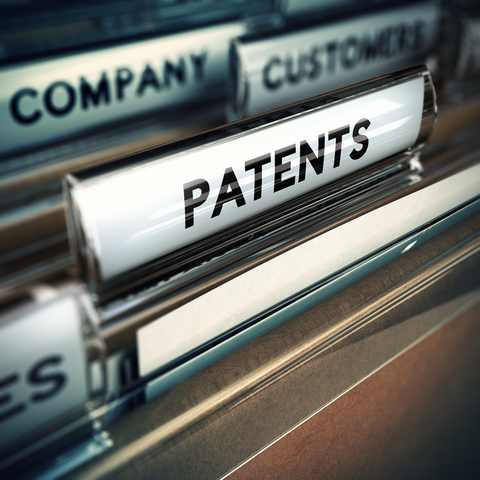 45
45TIPO Publishes English Version of Patent Examination Guidelines, Part II, Chapter 6
TIPO has released the English version of the “Patent Examination Guidelines, Part II: Substantive Examination for Invention Patents, Chapter 6 Amendments” to enhance the international IP community’s understanding of Taiwan’s patent examination process. This chapter outlines the appropriate timing for proposing amendments and explains how their admissibility is evaluated during the examination process. Moreover, it functions as a helpful tool for foreign applicants, enabling them to assess whether their patent applications meet the requirements specified in said Guidelines. To learn more about the “Patent Examination Guidelines, Part II: Substantive Examination for Invention Patents, Chapter 6 Amendments,” please click the link provided below:46
TIPO’s Q2 2024 IPR Statistics Report
Overall Trends in Patent and Trademark ApplicationsIn the second quarter of 2024, TIPO received a total of 17,683 applications for three types of patents, representing a 2% increase compared to the same period last year. This includes 11,988 invention patents, 3,766 utility model patents, and 1,929 design patents (Figure 1). The share of patent applications from resident applicants was 51%, while non-resident applicants accounted for 49%. Compared to the same period in 2023, the number of patents filed by resident applicants decreased by 2%, while the number from non-resident applicants increased by 6%. Overall, there was a 2% increase in the total number of patent applications in this quarter, showing a slight rise in the number of all three types of patents in the second quarter over the past two years.In the second quarter of 2024, a total of 23,885 trademark registration applications were received (covering 29,387 classes), representing a 3% increase compared to the same period last year (Figure 2). Among these applications, 77% were filed by resident applicants and 23% by non-resident applicants. The number of applications has turned to positive growth, compared to the same period over the past year.Overview of Patent Applications Filed by ResidentsTop Ten Invention Patent ApplicantsResidents filed 4,699 invention patents, of which 3,734 were filed by corporations. Among the top ten applicants, TSMC ranked first with 308 applications, followed by Nanya Technology (136), AU Optronics (114), Inventec (90), Innolux (80), Acer (74), Realtek (70), UMC (65), MediaTek (49), and Delta (45)(Figure 4). TSMC has maintained the top position for eight consecutive years since the second quarter of 2017.Top Five Design Patent ApplicantsResidents filed 855 design patent applications. The top five applicants were: Shu-Te University with 22 applications, followed by L&F Plastics (16), Compal (15), Tong Yah (14), and Delta and Vanung University (both 13)(Figure 5).Overview of Patent Applications Filed by Non-ResidentsTop Ten Invention Patent ApplicantsNon-residents filed 7,289 invention patent applications. Among the top ten applicants, Applied Materials from the US ranked first with 208 applications, returning to the top position. The remaining top applicants were: Samsung Electronics (202) from R. Korea, Qualcomm (191) from the US, Tokyo Electron (128) from Japan, Coupang (108) from R. Korea, Screen Holdings and Nitto Denko (both 90) from Japan, Shin-Etsu Chemical (73) from Japan, Lam Research (69) from the US, and ASML (67) from the Netherlands (Figure 4).Filing Countries (Regions) of Invention Patent ApplicantsThe top five countries (regions) for invention patent applications are Japan with 2,726 applications, followed by the US (1,696), mainland China (864), R. Korea (677), and Germany (255)(Figure 3). Of these, applications from mainland China and Germany have grown by over 10%, indicating rapid growth.Top Five Design Patent ApplicantsNon-residents filed 1,074 design patent applications. The top five applicants were led by Zhejiang Smart Intelligence from mainland China with 72 applications, followed by Ford Global Technologies (48) from the US, BMW (34) from Germany, Molex from the US and China Wonderland from mainland China (both 29)(Figure 5). Of these, Zhejiang Smart Intelligence has entered the top five for the first time.Filing Countries (Regions) of Design Patent ApplicantsThe top five countries (regions) for design patent applications are Japan with 248 applications, followed by the US (234), mainland China (223), Switzerland (97), and Germany (75)(Figure 3). Notably, the number of applications from the US has surpassed those from Switzerland and mainland China, moving up to the second position. Overview of Trademark Registration ApplicationsTop Ten Resident Applicants for TrademarksThe top ten applicants for trademark registrations are led by Shen-Bian Matzu Temple with 131 applications, followed by Farglory Dome (100), Goli Power (95), Tsai Ho Want Enterprises and Uni-President (both 78), Kao, Jia-Yu (54), First Commercial Bank and Pou Yuen Ji Global (both 50), Mitac Information (44), and Nan I Book (40)(Table 1).NICE Classification of Resident ApplicationsAmong the top three categories of trademark applications by resident applicants, Class 35 (advertising, business management, retail and wholesale services, etc.) led with 3,518 applications, followed by class 43 (restaurants, lodgings, etc.)(1,779), and class 30 (coffee, tea, pastries, etc.)(1,631)(Figure 6). This indicates that trademark applications filed by resident applicants are predominantly concentrated in business management, as well as in consumer services and goods.Top Ten Non-Resident Applicants for TrademarksThe top ten non-resident applicants for trademark registrations are led by Full Comfort from the British Virgin Islands with 68 applications. They are followed by Huawei (62) from mainland China, Zhejiang Kayou Culture Communication (33) from mainland China, Tencent Holdings (32) from the Cayman Islands, Zhejiang Tucson Custom from mainland China and Abercrombie & Fitch from Switzerland (both 30), Nanyang Hongfeng Electrical (28) from mainland China, Blue Origin (26) from Singapore, Onefifteen (22) from Hong Kong, and Shiseido (21) from Japan (Table 2).Filing Countries (Regions) of Non-Resident ApplicationsThe top five countries (regions) for trademark applications are led by mainland China with 1,528 applications, followed by Japan (905), the US (726), R. Korea (438), and Hong Kong (344)(Figure 3).NICE Classification of Non-Resident ApplicationsAmong the top three categories of trademark applications by non-resident applicants, Class 9 (computers and technology products, etc.) led with 1,021 applications, followed by Class 3 (cosmetics and detergents, etc.) and Class 35 (advertising, business management, retail and wholesale services, etc.)(both 634), and Class 5 (pharmaceuticals, etc.)(507)(Figure 7). Notably, Class 9 is the major category for trademark applications for protection by non-resident applicants in Taiwan.Analysis of Applications by IndustryMost trademark applications were classified under “Agriculture” with 6,172 applications, followed by "Health" (4,728), and "Business Services" (4,661)(Figure 8).Among the top three industries for trademark applications, resident applicants are concentrated in "Agriculture" with 5,096 cases, primarily for trademarks related to restaurants and accommodations. Non-resident applicants have the highest number in "Research and Technology" with 1,605 cases. Additionally, both resident and non-resident applicants have seen growth in the number of cases related to "Health," and the number of non-resident applications for "Clothing and Accessories" has increased by 27%. Note: The above statistical data is based on the “first applicant” of the applications when referencing applicants and nationalities.Reference URL: https://www.tipo.gov.tw/en/lp-302-2.html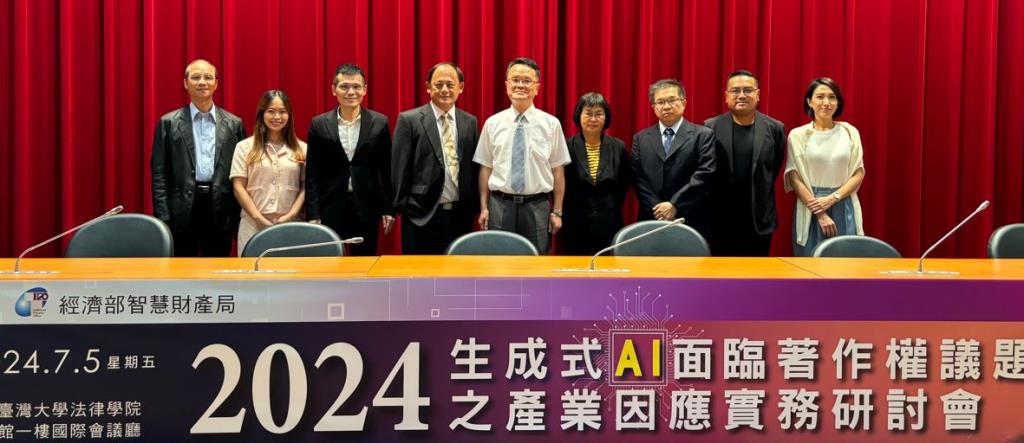 47
47Seminar on Practical Strategies for Addressing Copyright Issues in Generative AI Concludes with Enthusiastic Participation
On July 5, 2024, TIPO hosted the Seminar on Practical Strategies for Addressing Copyright Issues in Generative AI at the International Conference Hall of the NTU College of Law Tsai Lecture Hall. The seminar featured distinguished experts in copyright law and AI industry representatives, including Assistant Professor Chung-Hsin Chang, Copyright academic and expert; Attorney Wenchi Lai; Richard Tzong-Han Tsai, core model training coordinator with RLHF at the TAIDE project, National Science Council; Celeste Yang, Corporate Counsel at Microsoft Taiwan; Claire Lin, Regional Counsel at Google Taiwan; and Ernest Wong, Principal Digital Media Solutions Consultant at Adobe in Hong Kong and Taiwan. These six representatives engaged in in-depth discussions and shared insights on topics such as "Copyright Challenges and Developments in Generative AI" and "Responsible AI Practices and Applications in the Field of Copyright." The seminar attracted over 200 participants from industry, government, and academia, fostering lively interactions and enhancing mutual understanding across different sectors.TIPO Director General Dr. Cheng-Wei Liao emphasized the significance of AI technology and the rapid development of generative AI, which presents new challenges. Balancing the protection of copyright holders' interests with AI industry growth is a matter of careful consideration globally. This seminar provided valuable industry strategies for addressing copyright issues posed by generative AI.TIPO noted that intellectual property (patents, trademarks, and copyrights) is highly harmonized internationally, and the legal framework for AI and copyright involves broad aspects. Understanding the impact of emerging technologies on industry practices is crucial for embracing the opportunities and facing the challenges brought by AI. TIPO will continue to monitor global developments to inform policy-making in Taiwan.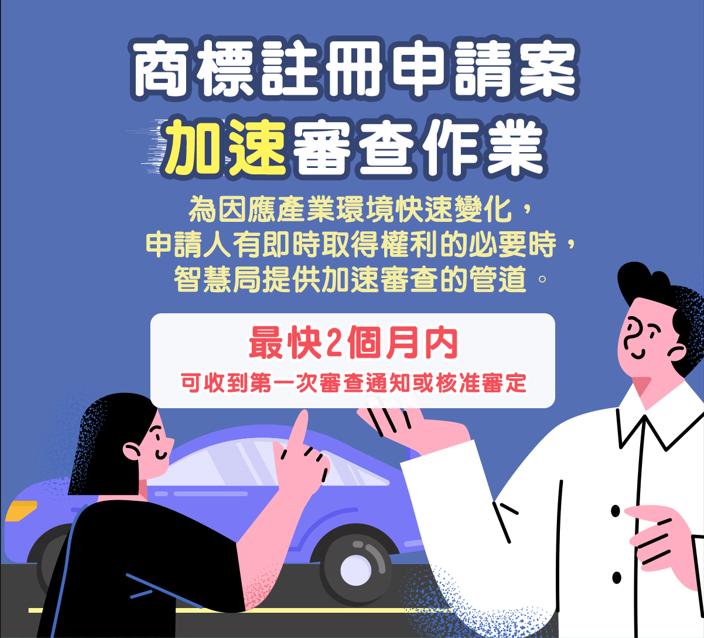 48
48Accelerated Examination for Trademark Registration Applications Takes Effect, Benefitting Applicants in Need of Rapidly Obtaining Trademarks
On May 1, 2024, TIPO launched an accelerated examination for trademark registration applications specifically designed for applicants who urgently need to obtain trademark rights. Applicants must demonstrate the urgency and pay an additional fee for accelerated examination.Generally, the first examination notice will be issued within two months after the application is filed. However, the effectiveness of the accelerated examination may be hampered if notifications for corrections or suspensions are issued during the examination process. The accelerated examination mechanism is introduced in the latest amended Trademark Act, balancing the user-pays principle and avoiding delays in the examination of general applications. This mechanism provides a fast track to obtaining trademark registration, significantly improving the efficiency of trademark registration.TIPO encourages applicants who are in urgent need of obtaining rights to make good use of the accelerated examination mechanism, which will help in trademark rights protection and commercial planning.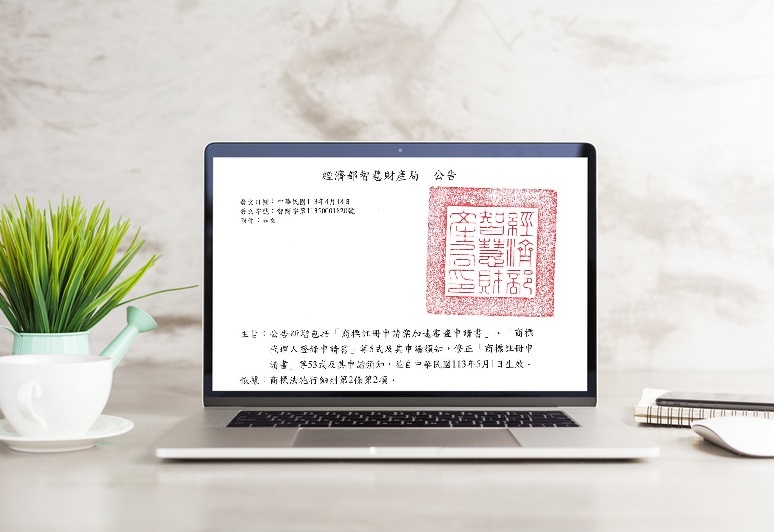 49
49TIPO Revises the Operation Directions on Hearings for Trademark Dispute Cases, Effective June 11, 2024
To provide a more professional and rigorous hearing system while considering the efficiency of relief processes, TIPO has revised the Operation Directions on Hearings for Trademark Dispute Cases based on the Administrative Procedure Act, Regulations Governing Court's Handling of Remote Interrogation in Intellectual Property Case, and other relevant laws. These revisions will serve as the basis for case examination.Key revisions include:I. To strengthen the adjudicative functions of the hearing process, it is stipulated that trademark dispute cases undergoing hearings must be examined by a panel of at least three examiners (Point #3).II. Provisions have been added to allow preparatory hearings based on the complexity of the cases (Point #5).III. Hearings should be conducted orally and publicly; however, if conducted in public would harm the public interest or cause significant damage to the parties, the grounds for requesting a non-public hearing are specified (Point #6).IV. It is specified that if the hearing date or location is changed, the hearing is canceled, or examiners are replaced, the notification and announcement procedures must be reenacted (Point #6).V. The presiding officer may convey his or her legal opinions on factual, legal, and evidentiary issues to an extent appropriate on the case in due course (Point #8).VI. It is stipulated that hearings may be conducted via remote video conferencing, and the methods and legal effects of signing and sealing hearing records are specified (Points #9 and #12). 50
50TIPO Revises the Program for Hearing Patent Invalidation, Effective June 11, 2024
To provide diverse, swift, and professional channels for resolving patent disputes, TIPO has revised the Program for Hearing Patent Invalidation based on previous experiences and industry feedback. Revisions also reference the Administrative Procedure Act, and the revised procedure will serve as the basis for future case examinations.Key revisions include:I. To comply with legal standards, the title has been amended to the “Operation Directions on Hearings for Patent Invalidation Cases.”II. The function of preparatory hearings has been augmented to include formulating and simplifying the issues, clarifying the matters for amendment in the invalidation case, and establishing the key points of attack or defense for the hearing. Both parties are required to adhere to these agreements (Point #5).III. The presiding officer may convey his or her legal opinions on factual, legal, or evidentiary issues to an extent appropriate on the case in due course (Point #8).IV. I. Hearings may now be conducted via remote video conferencing (Point #9).V. I. The effects of absence from the hearing are clearly specified (Points #6 and #9).VI. Hearing records can be summarized with key points and supplemented by audio or video recordings for simplification (Point #12).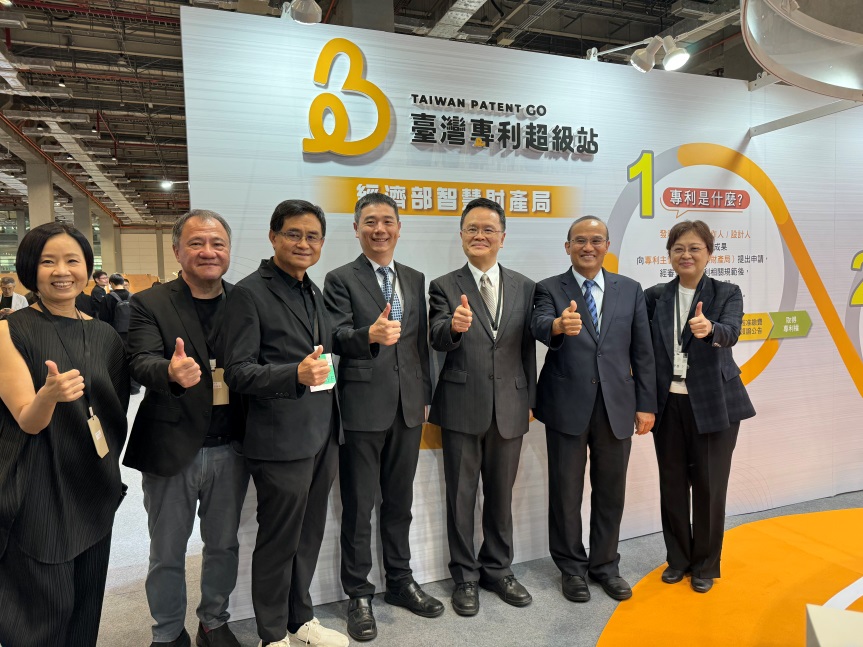 51
51TIPO Lays the Foundation for IP Protection at YODEX
To help participating students and professional designers at YODEX gain a deeper understanding of patents and protect their design works or products through the patent system, TIPO set up the "Taiwan Patent Go" station from May 24 to 27 at the 43rd Young Designers' Exhibition, offering free consultations on design patents.Taiwan Patent Go was one of the focal points for visitors at this exhibition. During the event, Director General Dr. Cheng-Wei Liao of TIPO invited notable guests such as Vice Minister Ching-Chang Lien (former Director General from the Industrial Development Administration), Vice President Oliver Lin, Vice President Nina Ay, and Vice President of Research and Development Shyhnan Liou from the Taiwan Design Research Institute (TDRI). These guests shared their expertise and insights, hoping that the annual setup of Taiwan Patent Go at YODEX would plant the seeds for IPR protection among the new generation of designers.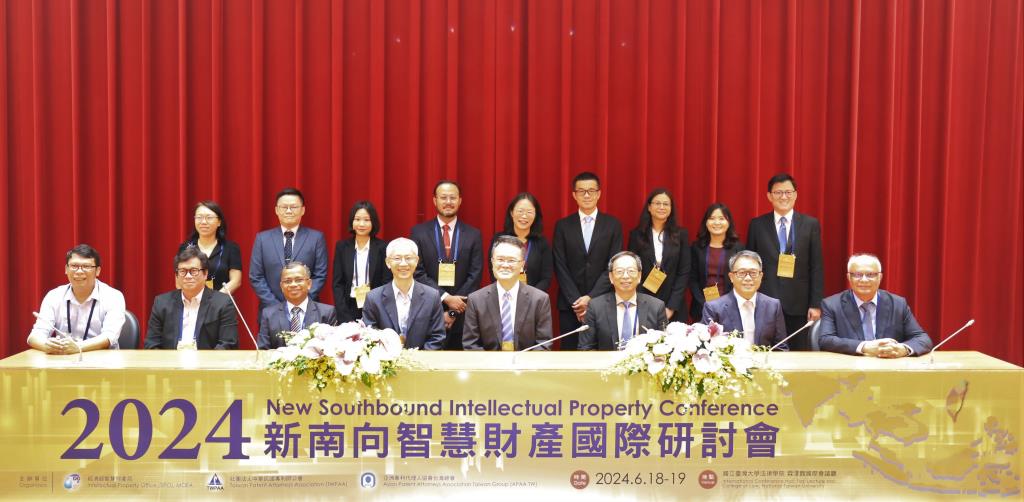 52
522024 New Southbound Intellectual Property Conference Gathers Experts from Seven Countries to Aid Industry in Market Expansion
TIPO, in collaboration with the Taiwan Patent Attorneys Association (TWPAA) and the Asian Patent Attorneys Association (APAA) Taiwan Group, co-organized the 2024 New Southbound Intellectual Property Conference from June 18 to 19, 2024, at the Tsai Lecture Hall, College of Law, National Taiwan University. The event featured representatives from the IP offices and leading patent professionals from seven countries: Malaysia, the Philippines, Singapore, Thailand, Vietnam, Indonesia, and India, who shared the latest developments and practical trends in their respective patent systems. The conference attracted over 210 participants from industry, government, and academia, fostering extensive and lively exchanges of views with experts from Southeast Asia and India.Southeast Asian countries and India commonly contend with issues such as lengthy patent examination times and backlog. Through recent amendments to patent laws, these countries hope to improve the efficiency and quality of patent examination processes. TIPO Director General Dr. Cheng-Wei Liao noted that Taiwan faced similar challenges a decade ago, with examination times reduced from 47 months to the current 14 months. Taiwan is willing to share its experience in clearing patent backlogs and is open to discussing the establishment of Patent Prosecution Highways (PPH) with other countries to alleviate the examination burdens on patent offices.TIPO extends its gratitude to the Taiwan Patent Attorneys Association and the Asian Patent Attorneys Association Taiwan Group for their support and cooperation in successfully organizing this conference, allowing academic and industry experts from various countries to gather and share their experiences. Through introductions to legal systems and practical analyses, the conference provided a comprehensive understanding of the latest developments and trends in patent laws and practices in Southeast Asia and India. This will serve as a valuable reference for Taiwanese enterprises in applying for patents and planning their market strategies, fostering better industrial development.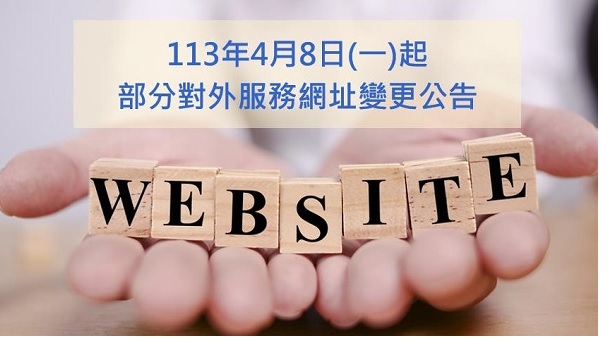 53
53TIPO Updates URLs for Certain Website Services Starting April 8, 2024
To enhance information security and provide more reliable public services, TIPO has updated the links for the following systems as of April 8, 2024. Old links will no longer be available beginning May 1, 2024. For the following services, please access the provided links below:TIPO's Patent Specific Terminology Bilingual Glossary Search: https://tiponet.tipo.gov.tw/IPOTechTerm/login.jspGoods & Services Bilingual Glossary Search: https://tiponet.tipo.gov.tw/IPOTMGoods/login.jspTIPO's Library Search System: https://tiponet.tipo.gov.tw/opac895/login.aspxLink to Download Open Data from DATA.GOV.TW: https://data.gov.tw/datasets/search?p=1&size=10&s=_score_desc&cgl-3=453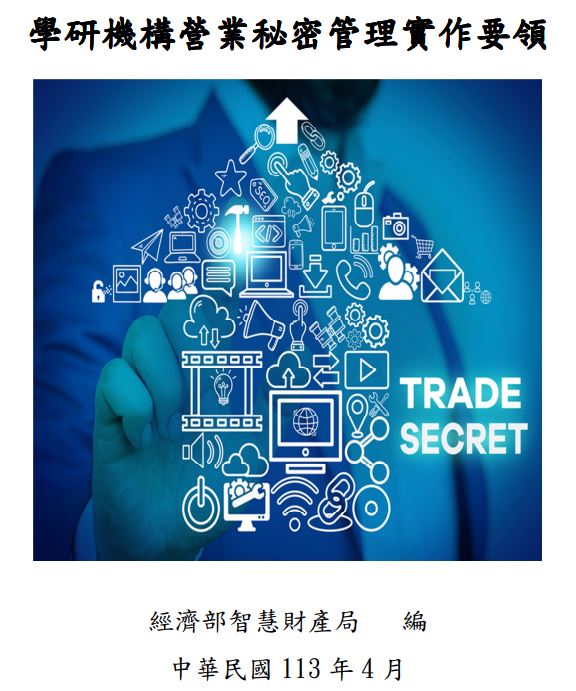 54
54TIPO Shares 13 Strategies for Managing Trade Secrets with Academic and Research Institutions
TIPO helps businesses establish trade secrets protection mechanisms, recognizing that industry innovation relies on robust R&D support. R&D results produced as a result of academic and industry collaboration can also be considered as trade secrets.Given the culture of open sharing among, and the sheer scale of, academic and research institutions, on April 12, TIPO published the Practical Guidelines for Managing Trade Secrets in Academic and Research Institutions. The guidelines are tailored specifically to these institutions and outline 13 practical strategies to gradually establish a management approach suitable for their internal culture. By understanding their internal management systems, personnel, resources, and research areas, these institutions can develop a robust network of trade secret protections that support R&D capabilities and outcomes, bolstering both academic and industry development nationwide.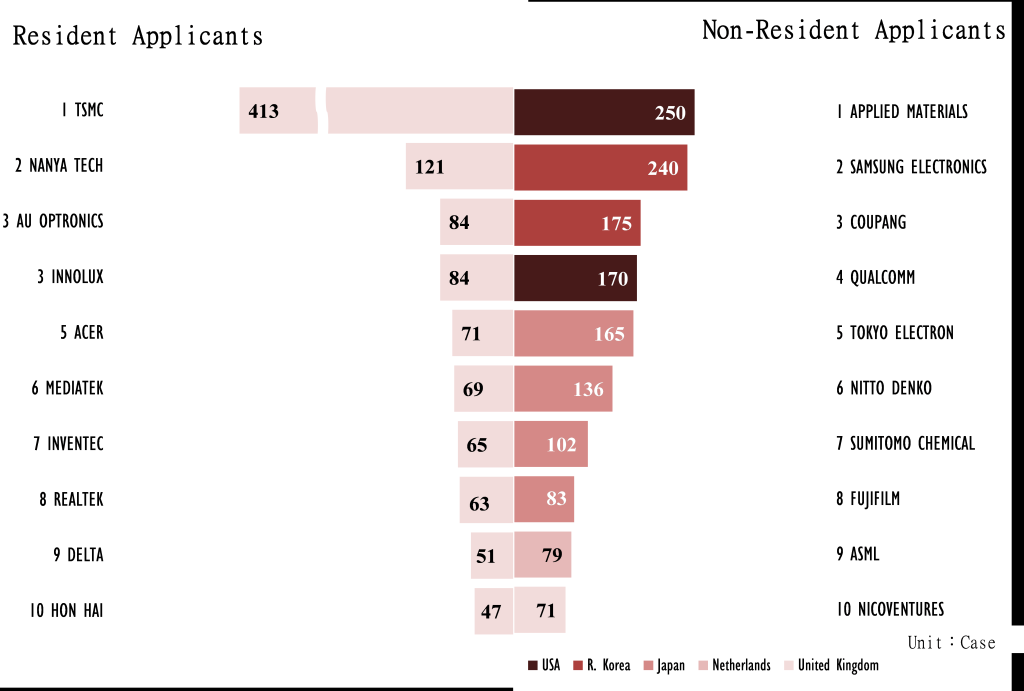 55
55TIPO’s Q1 2024 IPR Statistics Report
Overall Trends in Patent and Trademark ApplicationsIn Q1 2024, TIPO received a total of 16,815 patent applications, comprising 11,989 invention patents, 3,226 utility model patents, and 1,600 design patents (Figure 1). Compared to the same period last year, both invention and design patent applications decreased by 4%, while utility model patent applications increased by 4%. Among these, 49% of the overall patents were filed by resident applicants, and 51% were filed by non-resident applicants. Over the past five years, the first-quarter patent applications have experienced a slight decline for two consecutive years, warranting further attention.TIPO received a total of 21,751 trademark registration applications across 26,928 classes (Figure 2). This represents a slight increase of 1% compared to the same period last year. Among these applications, 78% were filed by resident applicants, while 22% were filed by non-resident applicants. Over the past five years, the first-quarter trademark application trend has shifted from negative to positive, showing a 1% increase.Overview of Patent Applications Filed by ResidentsTop Ten Invention Patent ApplicantsResidents filed a total of 4,492 invention patent applications. Among them, enterprises accounted for 3,655 applications. The top ten applicants for invention patents were as follows: TSMC led with 413 applications, followed by Nanya Tech (121), AU Optronics and Innolux (both 84), Acer (71), MediaTek (69), Inventec (65), Realtek (63), Delta (51), and Hon Hai (47) (Figure 4).TSMC has consistently ranked first for five consecutive quarters since 2023 Q1. Hon Hai, on the other hand, has returned to the top ten applicants since 2022 Q2.Top Five Design Patent ApplicantsResidents filed 753 design patent applications, with the top five applicants being L&F Plastics (21), followed by CGUST and Hi-Joint (both 14), and Gung Chian and Coplus (both 12) (Figure 5).Overview of Patent Applications Filed by Non-ResidentsTop Ten Invention Patent ApplicantsNon-Residents filed a total of 7,497 invention patent applications. The top ten applicants for invention patents were as follows: Applied Materials from US outnumbered all others with 250 applications, Samsung Electronics (240) from R. Korea, Coupang (175) from R. Korea, Qualcomm (170) from the US, Tokyo Electron (165) from Japan, Nitto Denko (136) from Japan, Sumitomo Chemical (102) form Japan, Fujifilm (83) form Japan, ASML (79) from the Netherlands, and Nicoventures (71) from the UK (Figure 4).Filing Countries (Regions) of Invention Patent ApplicantsTop five countries (regions) for invention patent applications: Japan led with 3,325 patent applications, USA (1,526), R. Korea (715), mainland China (698), and Germany (222) (Figure 3). Notably, the number of applications from R. Korea has surpassed that from mainland China in this quarter, moving in rankings from the fourth position to the third position. It is noteworthy that the number of invention patent applications from R. Korea grew by 29% indicating the development of expansion of their patent portfolio in Taiwan.Top Five Design Patent ApplicantsThere were 847 design patent applications filed by non-resident applicants. Among the top five applicants, Volvo from Sweden submitted the highest number of applications (32). The subsequent top applicants were Wonderland (27) from Switzerland, Stellantis (25) from France, and Uni-Charm and Tasaki from Japan (both 19) (Figure 5).Both Volvo and Stellantis have entered the top five for the first time, with Volvo taking the lead.Filing Countries (Regions) of Design Patent ApplicantsTop Five Countries (Regions) for Design Patent Applications: Japan leads with 213 patent applications, USA (138), mainland China (105), Switzerland (91), and France (51) (Figure 3).Overview of Trademark Registration ApplicationsTop Ten Resident Applicants for TrademarksTop ten resident applicants for trademarks: Uni-President led with 311 applications, Momo (72), Wu, Ruo-Mei (48), Thinkpower (47), King Car (39), Kd Flash (36), Chelpis (34), Ever Rich (33), Highwealth (27), and Bionet (26) (Table 1).NICE Classification of Resident ApplicationsTop three classes of resident applications for trademarks: class 35 (advertising, business management, retail and wholesale services, etc.)(3,201), class 43 (restaurants, lodgings, etc.)(1,708), and class 30 (coffee, tea, pastries, etc.)(1,586) (Figure 6). This indicates that resident applications represented a larger share in trademarks related to business management and the catering service industry, and the latter maintained significant market momentum in comparison to the growth rate of trademark applications for goods such as coffee and pastries.Top Ten Non-Resident Applicants for TrademarksTop ten non-resident applicants for trademarks: Quanzhou Baoyu from mainland China led with 56 applications, Tencent (42) from Cayman Islands, Honor Device (39) from mainland China, Pledis (31) from R. Korea, Misto Brand and Chow Sang Sang from Hong Kong (both 29), L' Oreal (24) from France, Beijing Guangyi (22) from mainland China, and Gilead Sciences from Ireland and Artshare from R. Korea (both 21) (Table 2).Filing Countries (Regions) of Non-Resident ApplicationsTop five countries (regions) for trademark applications: mainland China (1,261), Japan (736), US (674), R. Korea (449), and Hong Kong (299) (Figure 3).NICE Classification of Non-Resident ApplicationsTop three classes of non-resident applications for trademarks: class 9 (computer and technology products, etc.)(884), class 35 (advertising, business management, retail and wholesale services, etc.)(600), and class 3 (cosmetics and detergents, etc.)(515) (Figure 7). Among these, non-residents placed greater emphasis of trademark protection on computers, audio-visual equipment, and information technology products in class 9, and retail and wholesale services and online shopping in class 35.Analysis of Applications by IndustryMost trademark applications were filed under “Agriculture” (5,915), followed by “Health” (4,449), and “Business and services” (4,181) (Figure 8). Notably, the fourth-ranking industry is “Research and technology” (3,598), showing a higher growth rate of 5% in the number of applications than that of the top three industries.Resident applications focused on “Agriculture” industry (4,985) were primarily related to trademarks for restaurants and accommodations. On the other hand, non-resident applicants filed the most under “Research and technology” (1,433) (Figure 8). Additionally, positive growth has been seen in both resident applications in “Agriculture” and “Health”, as well as non-resident applications in “Clothing and accessories.”Note: The above statistical data for applicants and nationalities is based on the ‘first applicant.’Reference URL: https://www.tipo.gov.tw/en/lp-302-2.html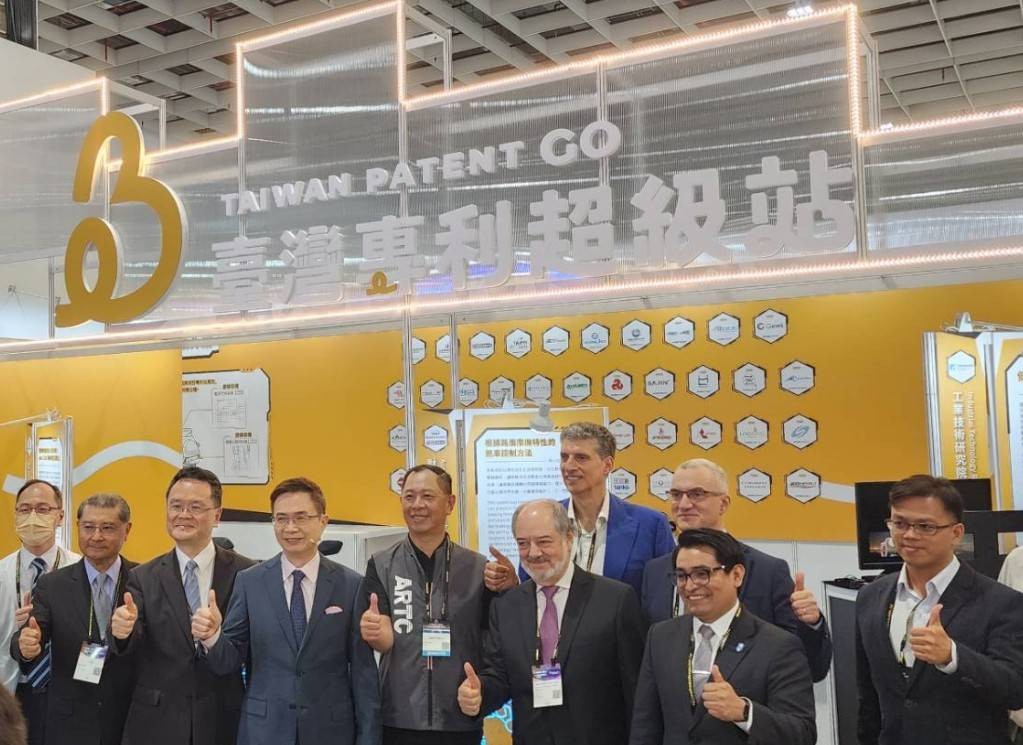 56
56Promoting National Innovation with “Taiwan Patent Go” at Major Expos
In April, TIPO set up the award-winning “Taiwan Patent Go” pavilion at the Taipei International Auto Parts & Accessories Show (TAIPEI AMPA 2024) held at the Taipei Nangang Exhibition Center and the Designed Giftionery Taiwan (DG Taiwan 2024) at the World Trade Center. Taiwan Patent Go showcases promising award-winning patent technologies, offering them exposure through diverse displays and promotions, recommending them to professional buyers, and facilitating matchmaking. These initiatives aim to commercialize these technologies and open new market opportunities, under the banner “Invent in Taiwan. Create for Business.”In celebration of the 80th anniversary of the Patent Act, Taiwan Patent Go also featured special free patent consultation services titled “Coffee Talks on Patents.” Visitors and exhibitors at the pavilion had the opportunity to explore exceptional award-winning patents and receive professional services from patent examiners, patent attorneys, and the staff from the Patent Search Center. Looking forward, Taiwan Patent Go will also be featured at the Young Designer’s Exhibition (YODEX 2024) in May and the Taiwan Innotech Expo (TIE) in October. Visitors from all industries are welcome to visit.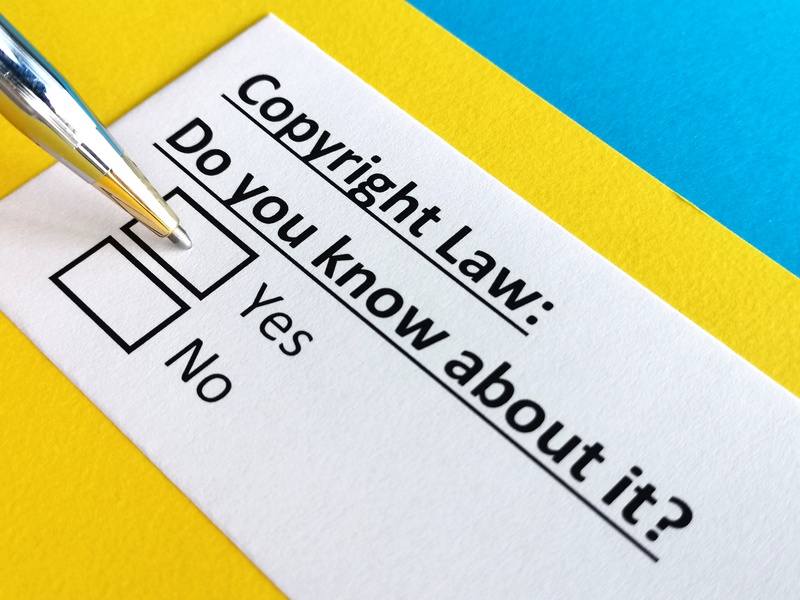 57
57The Latest Version of the Copyrights Inside the Library Has Been Released on TIPO’s Official Website for Public Reference
The Copyrights Inside the Library explains copyright issues related to library operations and usage in a simple and easy-to-understand manner, with Q&A sections addressing common copyright problems encountered in library practices. The publication has become recommended reading for library managers and staff and readers alike.In response to the digitalization needs of libraries, Article 48 of the Copyright Act was amended on June 15, 2022, allowing the National Library to digitize its collection to prevent loss or damage of works, thereby ensuring the complete preservation of contemporary works. The amendment also allows the National Library, as well as general libraries, to provide online reading services to readers within certain restrictions, helping libraries provide digital services.To help the public understand the latest regulations and practical issues related to library copyright, TIPO commissioned the original author Assistant Professor Chung-hsin Chang from Soochow University’s Department of Law to compile an updated version. In addition to retaining the original content, it also addresses the impact of the amendment to Article 48 of the Copyright Law in 2022 on the use and operation of libraries. Copyrights Inside the Library has been published on TIPO’s official website under “Copyright Topics” for public reference.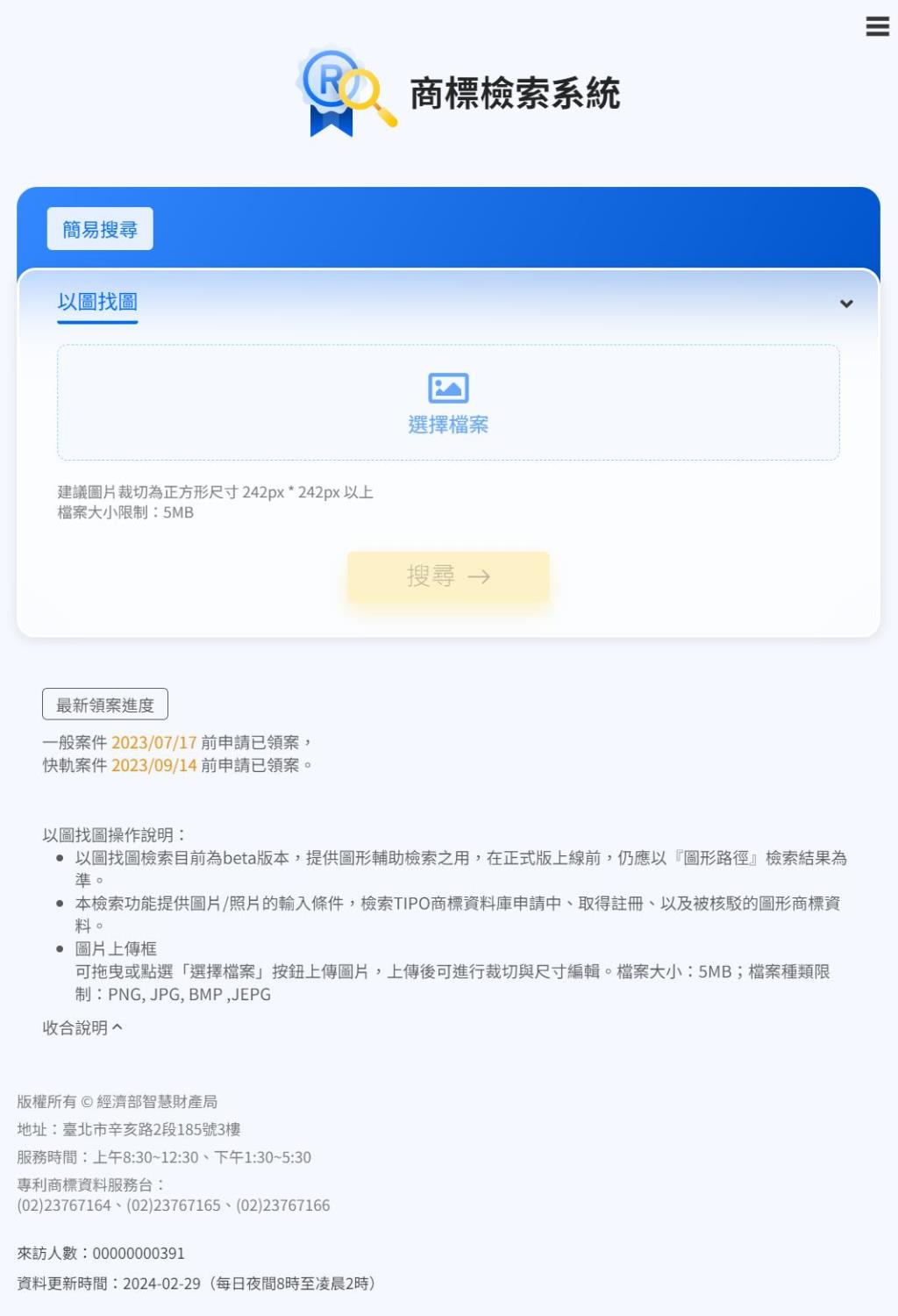 58
58TIPO Introduces New AI “Search by Image” Function
TIPO released a new AI "Search by Image" feature on March 25, which allows the public to upload trademark images and quickly verify whether identical or similar trademarks have already been registered or applied for.The newly launched AI "Search by Image" feature allows users to obtain AI-pre-filtered approximate trademarks without entering any other information. This enables quick comparison with previous cases, reducing the risk of confusingly similar to other trademarks and increasing the chances of successful trademark registration.The feature is still in the beta testing phase, and supplements the current image search system. The public is advised that before the official version is launched, search results should still be based on the current “Graphical Similarity Search” with filters of “Graphic path,” “Goods or Services Name,” or “Group of Similar Goods or Services.”To improve the detection rate of graphical similarities, especially for trademarks combining text and graphics, users are advised to clearly mark the graphical area of the trademark before conducting a search. Additionally, users can combine the current graphical path search method to ensure the comprehensive retrieval of potential trademarks that may constitute graphical similarities. 59
59Draft Amendments to the Trademark Act Will Come Into Effect on May 1, 2024
In response to industry and trademark examination practice in Taiwan, as well as to ensure a comprehensive regulatory environment and make relevant adjustments where necessary, draft amendments to the Trademark Act were promulgated in May 24, 2023 and are set to take effect on May 1, 2024. Amendment highlights include:1. Established a mechanism for the registration and management of trademark agents.2. Introduced mechanism for accelerated examination.3. Clearly defines eligibility for trademark applicants.4. Clarify the scope of rights for a trademark while part of its reproduction with functional aspects.5. Clarify nominative fair use, prior good-faith use, and exhaustion of rights that are not bound by trademark rights, in accordance with the application of judicial practices.6. Loosen the requirement for trademark proprietors to identify infringement at Customs.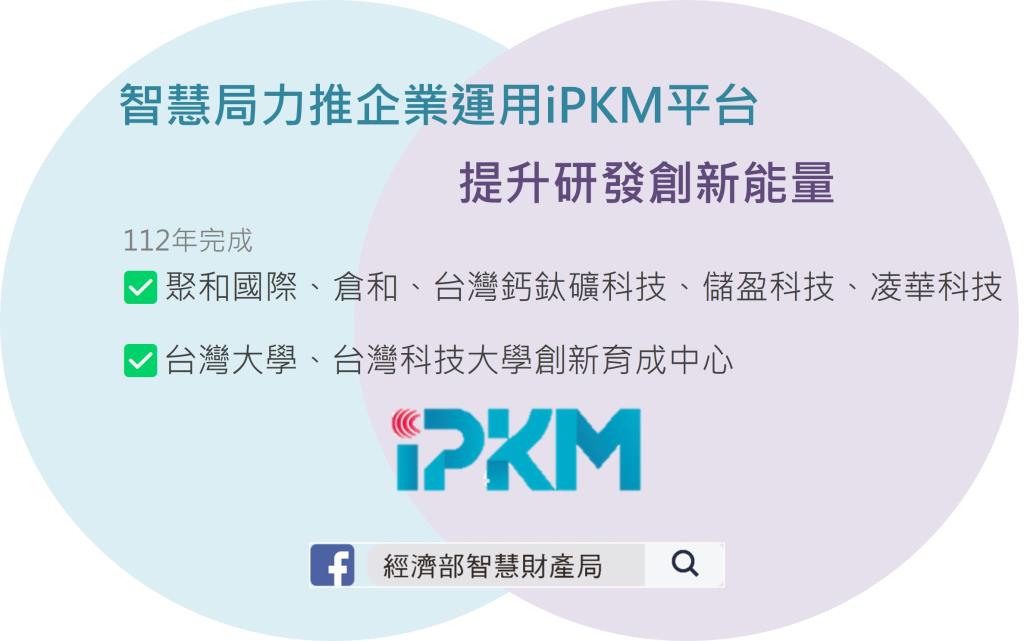 60
60TIPO Encourages Businesses to Utilize iPKM for Greater Innovation & R&D
TIPO released the Industrial Patent Knowledge Platform (“iPKM”) in 2017 to help SMEs in Taiwan develop capacities for R&D and innovation. The site offers a variety of information and smart services, including News, Columns, Patent Trends and Stats, Patent Regimes in Other Countries, Videos, and Recommended Patents, etc.In particular, iPKM News is further categorized into subtopics like Intellectual Property News, Events, and Economic & Trade Info, etc. Users can access the latest government information on intellectual property by browsing, subscribing, and searching through iPKM.iPKM also offers Industry Patent Trends and Recommended Patents, which provides analysis on tech trends and literature on patents to help businesses keep abreast of the latest patent developments across the world.Since 2018, TIPO has also been promoting the iPKM platform and its use to SMEs in select key industries, helping companies develop a basic understanding of intellectual property and become more familiar with operating and using the platform. As of 2023, a total of 162 businesses have benefitted from these services.Additionally, TIPO collaborated with the NTU Innovation and Incubation Center and the NTUST Business Incubation Center in 2023 to provide 221 IP consultations to startups. An overview of the benefits that iPKM has provided to businesses that use the platform has been published on TIPO's official website for public reference.TIPO encourages the public to make use of iPKM and shall continue to provide industry assistance and promote effective use of government platforms and tools. The hope is to bolster patent strategies and technological applications for greater innovation and R&D.

 Sitemap
Sitemap FAQs
FAQs Feedback
Feedback Bilingual Glossary
Bilingual Glossary